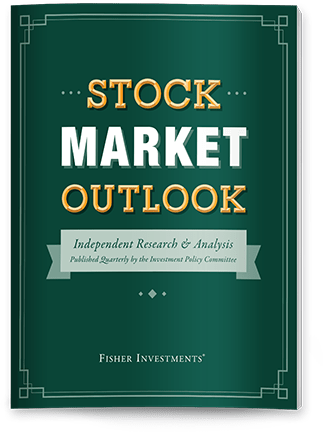Personal Wealth Management / Expert Commentary
3 Things You Need to Know This Week | US Inflation, Q2 GDP, US Consumer Update (Aug. 11, 2025)
Fisher Investments’ “3 Things You Need to Know This Week” is a weekly segment designed to help investors worldwide sift through the noise across financial media and understand what really matters for markets.
This week, we're covering:
- The latest on US consumer inflation data
- Q2 GDP updates from the UK, eurozone and Japan
- An update on US retail sales and consumer sentiment
Transcript
Jessica Breiland:
Hello, and welcome to 3 Things You Need to Know This Week—our regular series designed to help you sift through the noise across financial media and understand what really matters for markets. To stay up-to-date with our latest market insights, subscribe to our YouTube channel or visit fisherinvestments.com. And with that, here are three things you need to know this week.
First up, US inflation.
The latest US consumer inflation data is set to be released on Tuesday, offering some insight into the current state of the economy. Recently, consumer price index (CPI) inflation— which tracks changes in consumer prices— has been trending below its long-term average of around 3% year-over-year. Looking ahead, we anticipate inflation will remain relatively moderate.
Much of the attention surrounding this release will center on its potential influence on the Federal Reserve's policy decisions during their upcoming meeting on September 17th. The Fed's dual mandate focuses on keeping inflation around 2% year-over-year while also striving to maximize employment. Over the past few months, inflation has risen slightly, climbing from 2.3% in April to 2.7% in June. At the same time, job growth has slowed, and the unemployment rate has edged up some since the beginning of the year, though it remains low by historical standards. Some analysts interpret these dynamics as increasing pressure on the Fed to consider cutting rates.
Now, expectations for a potential rate cut in September have fluctuated significantly in recent weeks. While a rate cut could steepen the US yield curve, potentially benefiting the US economy, we'd remind investors not to overemphasize the impact of any single rate adjustment. Regardless of whether the Fed cuts rates on the back of recent inflation and employment data, it's important to remember that monetary policy is just one of many factors— such as economics, politics and investor sentiment—influencing financial markets and the broader economy.
Next, a Q2 GDP update.
It's set to be a busy week for economic growth data releases on Thursday. The UK is set to release its first estimate of Q2 GDP, while the eurozone and Japan will provide second estimates for their Q2 GDP figures. Recent data revisions have heightened uncertainty among investors, which could make the eurozone and Japan releases— which initially indicated mild and flat GDP growth, respectively— subject to greater scrutiny.
In the UK, GDP growth accelerated in Q1 to 0.7% quarter-over-quarter, which was up from 0.1% in Q4 of last year. However, this week's Q2 GDP release is expected to show some deceleration as tariff uncertainties dampened economic sentiment early in the quarter. Despite these headwinds, the UK has negotiated trade agreements with the US, EU and India, potentially setting the stage for longer-term economic stability.
Looking beyond the headwinds, the UK has emerged as one of the top performing developed stock markets in 2025, with the UK's steeper yield curve providing quiet support to value heavy UK stocks. To us, this is just the latest reminder that markets typically move most on the gap between reality and expectations.
Finally, a look at US retail sales and consumer sentiment.
This Friday, we'll get July's US retail sales data, along with a preliminary August reading of the University of Michigan Consumer Sentiment Index. Earlier this year, consumer confidence took a significant hit due to rising tariffs and economic concerns. But recent trends are showing signs of recovery. Retail sales after contracting in April and May showed modest growth in June. While retail sales data and consumer surveys may generate headlines, it's important to understand that they aren't reliable predictors of the economy's future trajectory.
While these metrics reflect current spending and sentiment, they don't provide insight into how consumers or businesses might behave going forward. Consumer sentiment often aligns with existing trends like stock market performance, economic data, and even the tone of financial news. Take this spring, for example, when sentiment dipped sharply during the stock market correction tied to tariff concerns. But falling consumer sentiment wasn't predictive. By May and June, sentiment rebounded some as markets and conditions stabilized.
On a positive note, weaker sentiment can help set lower expectations, so long as economic reality turns out even just a little better than people expect, that positive surprise can help propel stocks and support the continuation of the bull market.
And that's it for this episode of 3 Things You Need to Know This Week.
For more of our thoughts on markets, check out This Week in Review, released every Friday. You can also visit fisherinvestments.com. Thanks for tuning in and don't forget to hit like and subscribe!

Where Might the Market Go Next?
Confidently tackle the market’s ups and downs with independent research and analysis that tells you where we think stocks are headed—and why.




